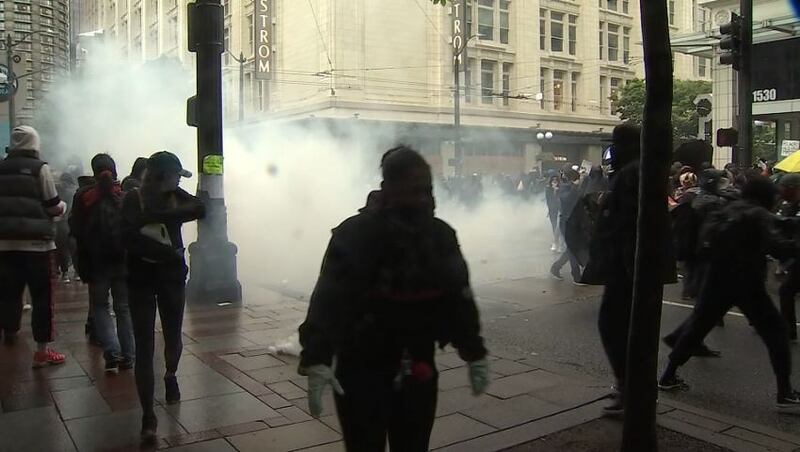A researcher at Duke University is concerned by the use of tear gas he's seeing by law enforcement across the country.
Sven-Eric Jordt, Ph.D., is a professor of anesthesiology at Duke University.
“People being so close together in these very tense situations, shouting, being very close, can transfer the virus much more efficiently if someone has an underlying infection,” Professor Jordt told KIRO-7 on Wednesday. “I’m very concerned the mass of crowds close to each other and tear gas can catalyze a second wave of COVID-19 and make it much worse than we thought before.”
He says exposure to tear gas makes the lungs more vulnerable to infection.
"We are concerned that tear gas exposures can make this worse by injuring the airways and respiratory system of people, and that would make it easier for the virus to infect the lungs of people," explained Jordt.
Jordt has been studying the effects of tear gas since the early 2000s. He says the only safety data for tear gas is from studies done 50-60 years ago, using lower concentrations, on healthy members of the military or law enforcement. He also says the impacts have not been studied on a diverse crowd of protesters.
Seeing clouds of tear gas night after night across the country has him sounding the alarm.
He thinks law enforcement needs to rethink the use of tear gas, especially after more than 106,000 people have been killed by the coronavirus.
“It’s really stunning the level of use in the context of the COVID-19 epidemic that there was no thought about this before at law enforcement and other federal and local institutions about the potential threat with the mix of COVID-19 that these weapons might pose,” said Jordt.
He would like the Centers for Disease Control and Prevention to study the impact of tear gas on the spread of coronavirus. He’d also like the CDC to study the long-term impact of tear gas on a diverse crowd — people of different ages, races, and underlying health conditions.
© 2020 Cox Media Group








